

In February I built these bee towers in my Garden. I have been surprised how quickly they have been used by bees and wasps.
By May bees are resident or present Osmia rufa, Osmia leania, Hylaeus hyalinatus and Megachile sp. By June further bees Anthrophora furcata and Anthidium manicatum are investigating holes but not shure they are going to be residents
5 Wasp species are either resident or have been prospecting Ancistrocerus sp. (prob oviventris). prob Trypoxylon attenuatum(Slender Wood Borer Wasp) prob Ectemnius continuus (a digger wasp) Chrysis ignita (a cuckoo wasp) Trychrisis cyanea (Ruby tailed wasp) and Sapgya quinquepunctata.
Sapgya quinquepunctata I think is the only sighting in Cornwall since the 1970's, which illustrates how usefull such a intervention can be.
I have had tube based designs of bee houses on a shed for a number of years, but these are more diffficult to sit next to and observe. Another advantage of the bee tower block design is that the roof seems a really great place to land on to warm up and then either hunt or forage. The thermal heat sink aspect of the breeze blocks makes them also really attractive.
Philip Hambly designed some alternative houses
"First I cut the blocks with handsaw to shape the roof, then stuck the slates on with Gripfill.
Knock the wooden stake in with sledgehammer, then drill 1/2 inch hole vertically down into the centre of the stake about 5 inches deep.
Have some round 1/2 inch round iron bar about 11 inches long and drop it into the hole drilled into the stake leaving 6inches sticking up.
Have some 6 x 1 inch tanalised plank, cut it to the length of your block base, drill a 1/2 inch in the centre and drop that down over the iron bar to support the block.
Finally drill 1/2 inch hole in the centre of the base of your block and just drop that onto the iron bar. You can lift it off whenever you need to. "
"Simples" BW Philip
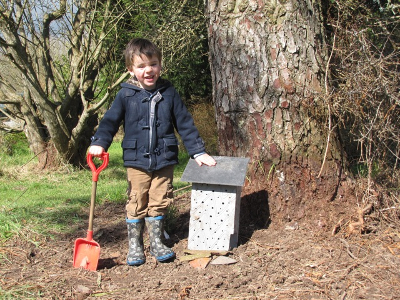
John Fosters Bee Flats and the Construction Enginner

The Bee Flats
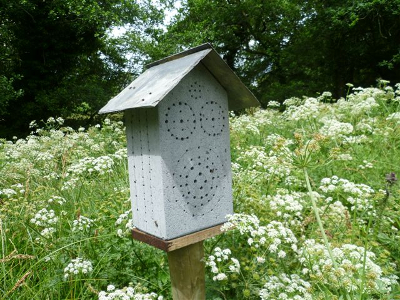
Philips Bee House
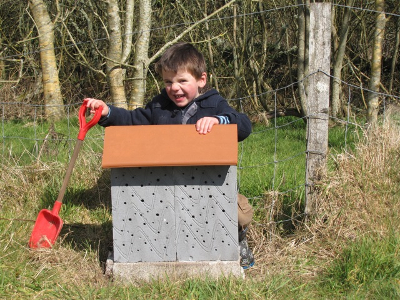
John Fosters Double Bee Flats Note Ridge Tile
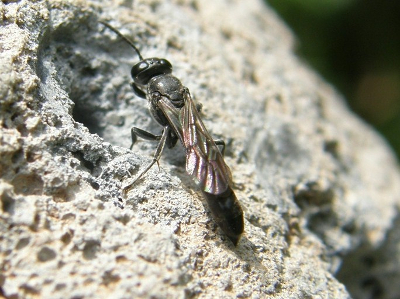
Trypoxylon attenuatum
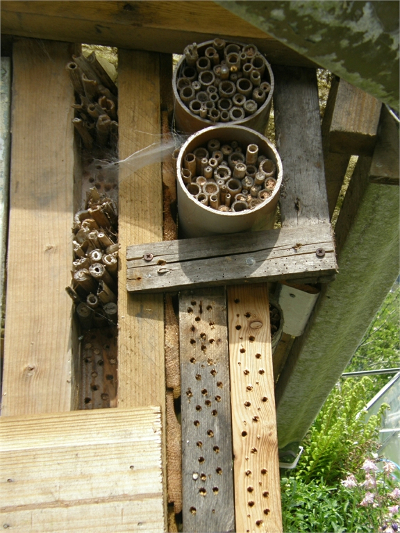
The Bee Tubes
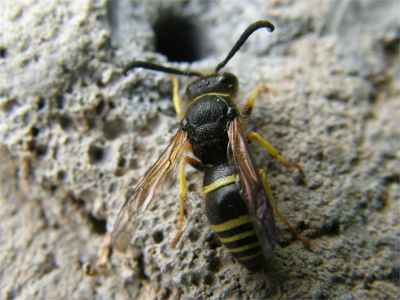
Ancistrocerus sp. (prob oviventris)
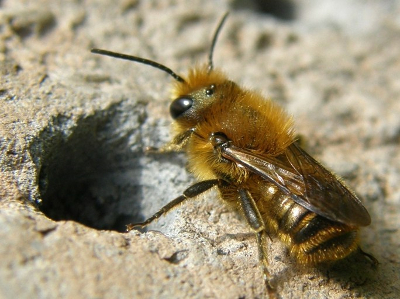
Osmia leania
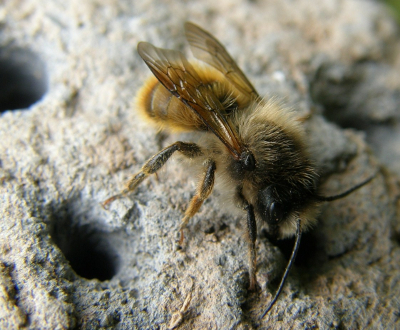
Osmia rufa
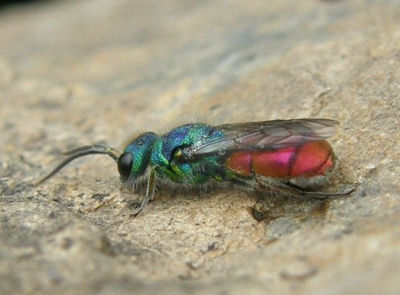
Chrysis ignita agg.